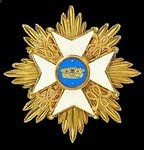A recent post on the Seven Years War wargaming page on Facebook which I frequent reminded me of the Prussian garrison regiment flags I posted a long time ago. I posted the flags of regiments 1, 2, 3, 5 and 9 (here: https://nba-sywtemplates.blogspot.com/search?q=garrison+regiment ) but not the rest, and I wondered if there was sufficient interest to justify finishing and posting the remainder. Please let me know in the comments.
I mentioned a while ago that, after someone asked me if I had a Tip Jar, I was thinking of adding a link to BuyMeACoffee, for those of you with loose change burning a hole in your pockets and who wanted to lob some my way. I have now added such a link near the top left of the blog (titled: Make A Small Contribution To My Book Fund!). I hasten to add that this is entirely voluntary on your part, and the flags and uniform templates will continue to be free. But if you would like to help my reference book fund I would be grateful; good books on historical flags tend not to be cheap and if you make a contribution, however small, you will have the satisfaction of knowing that you will have helped the production of yet more flags to be posted on the blog into the future. :-) Thank you.
Update Sunday 18th April: The default minimum amount for BMAC seems to be £5 but I have now been able to drop it to £2 as I find my way round the BMAC website! That seems a bit more reasonable for loose change, I think, and might attract more donations...



















